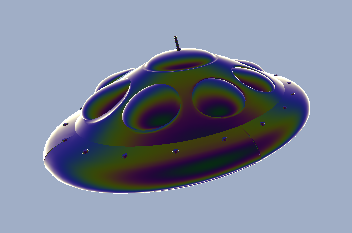【unity shader】高階光照 --- 薄膜干涉
阿新 • • 發佈:2019-01-22
-光照模型是shader程式設計的核心與基礎。 一般的光照模型–不管是lambert還是phong–其實都是對現實光照的模擬。
但是現實中的光照效果要複雜得多。但就光的反射而言, 薄膜干涉就是一種非常常見的高階光照效果。
什麼是薄膜干涉?
薄膜干涉的常見例子可以是陽光下的肥皂泡, 又或者是一張光碟
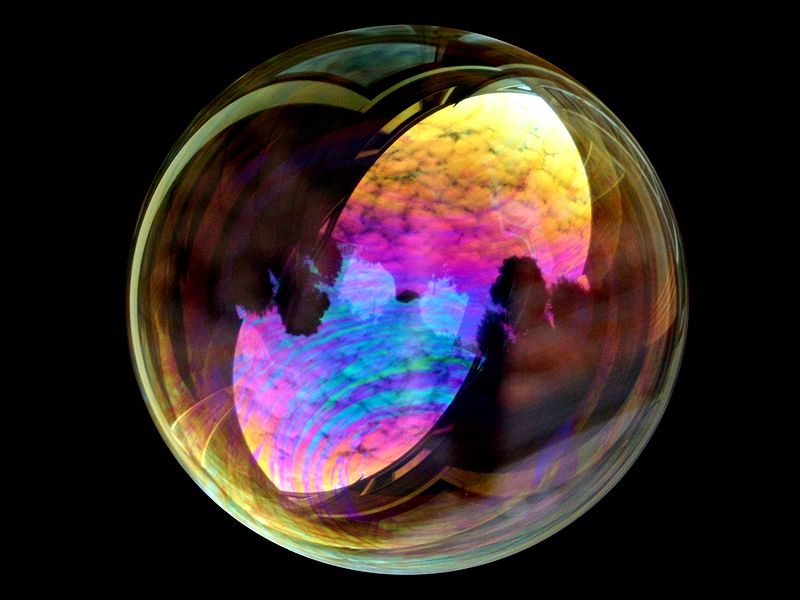

關於薄膜干涉的原理,可以參考wiki上的介紹 【https://en.wikipedia.org/wiki/Thin-film_interference】

如圖所示,光線進入薄膜時,在薄膜的上下表面均產生反射,由於反射光線走過的路徑不同,就產生了一個光程差。一般,當光程差正好等於光線波長的整數倍時候,反射光線就彼此增強,當光程差等於波長的整數倍又半波長時,光線就彼此抵消。
光程差與波長有關,又與光線的入射角度相關,所以我們就看到了陽光下的肥皂泡呈現出紅綠藍的光譜,並且隨著觀察角度的不同而不斷變化。
薄膜干涉的shader程式設計
- 利用Ramp貼圖模擬薄膜干涉效果
薄膜干涉的shader模擬,在NVIDIA的網站教程中有一個範例。對一艘外星UFO施以薄膜干涉,效果是這樣滴。
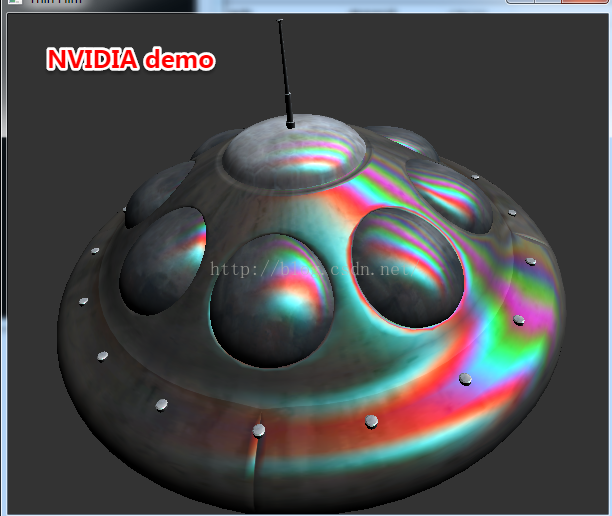
網上有人將這個demo轉到了unity shader中,畫風有些不一樣了。
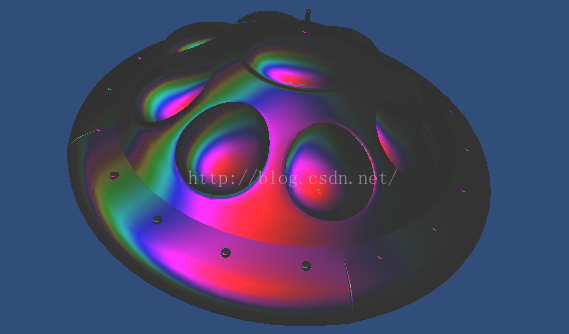
具體差異從何而來先不管,這個shader的實現原理就是計算光程差,以此為座標對一副Ramp貼圖取樣,從而模擬光譜效果。實際觀感還有賴於其他手段優化。
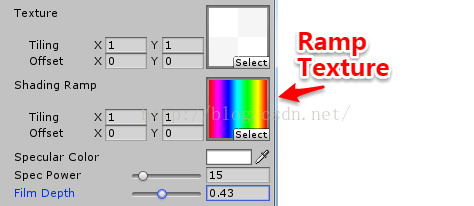
完整的shader程式碼如下:
Shader "thinfilm2" - 模擬光程差公式
薄膜干涉的光程差公式很簡單,已知光的波長,折射率以及薄膜厚度,即可求解。
當光程差等於波長的整數倍又半波長時,反射加強;
當光程差等於半波長的整數倍,反射抵消。
我們利用三角函式來實現反射的週期特性,同時針對紅綠藍光設定不同的波長和折射率,這樣就模擬出了一個實時的薄膜干涉效果
相應的shader程式碼如下:
Shader "Unlit/thinfilm_Unlit_IOR"
{
Properties
{
_MainTex("Texture", 2D) = "white" {}
_FilmDepth("film thickness", Range(1, 2000)) = 500.0
_IOR("refraction index", Vector) = (0.9, 1.0, 1.1, 1.0)
}
SubShader
{
Tags{ "RenderType" = "Opaque" }
LOD 100
Pass
{
CGPROGRAM
#pragma vertex vert
#pragma fragment frag
// make fog work
#pragma multi_compile_fog
#include "UnityCG.cginc"
#include "Lighting.cginc"
struct appdata
{
float4 vertex : POSITION;
float4 normal: NORMAL;
float2 uv : TEXCOORD0;
};
struct v2f
{
float3 worldNormal : TEXCOORD0;
float3 worldPos : TEXCOORD1;
float2 uv : TEXCOORD2;
UNITY_FOG_COORDS(1)
float4 vertex : SV_POSITION;
};
sampler2D _MainTex;
float4 _MainTex_ST;
Vector _IOR;
fixed thinFilmReflectance(fixed cosI, float lambda, float thickness, float IOR)
{
float PI = 3.1415926;
fixed sin2R = saturate((1 - pow(cosI, 2)) / pow(IOR,2));
fixed cosR = sqrt(1 - sin2R);
float phi = 2.0*IOR*thickness*cosR / lambda + 0.5; //計算光程差
fixed reflectionRatio = 1 - pow(cos(phi * PI*2.0)*0.5+0.5, 1.0); //反射係數
fixed refRatio_min = pow((1 - IOR) / (1 + IOR), 2.0);
reflectionRatio = refRatio_min + (1.0 - refRatio_min) * reflectionRatio;
return reflectionRatio;
}
v2f vert(appdata v)
{
v2f o;
o.vertex = mul(UNITY_MATRIX_MVP, v.vertex);
// Transform the normal fram object space to world space
o.worldNormal = mul(v.normal, (float3x3)_World2Object);
// Transform the vertex from object spacet to world space
o.worldPos = mul(_Object2World, v.vertex).xyz;
o.uv = TRANSFORM_TEX(v.uv, _MainTex);
UNITY_TRANSFER_FOG(o,o.vertex);
return o;
}
float _FilmDepth;
fixed4 frag(v2f i) : SV_Target
{
fixed3 worldNormal = normalize(i.worldNormal);
fixed3 worldLightDir = normalize(_WorldSpaceLightPos0.xyz);
// Get the view direction in world space
fixed3 viewDir = normalize(_WorldSpaceCameraPos.xyz - i.worldPos.xyz);
// Get the reflect direction in world space
fixed3 reflectDir = normalize(reflect(-worldLightDir, worldNormal));
fixed3 H = normalize(viewDir + worldLightDir);
fixed ndl = max(0,dot(worldNormal, worldLightDir));
fixed hdn = dot(worldNormal, H);
//fixed ndv = max(0, dot(worldNormal, viewDir));
fixed rdv = max(0, dot(reflectDir, viewDir));
// sample the texture
fixed4 albedo = tex2D(_MainTex, i.uv);
fixed ref_red = thinFilmReflectance(hdn, 650.0, _FilmDepth, _IOR.r); //紅光
fixed ref_green = thinFilmReflectance(hdn, 510.0, _FilmDepth, _IOR.g); //綠光
fixed ref_blue = thinFilmReflectance(hdn, 470.0, _FilmDepth, _IOR.b); //藍光
fixed4 tfi_rgb = fixed4(ref_red, ref_green, ref_blue, 1.0);
fixed4 col = albedo*tfi_rgb*ndl*0.35 +tfi_rgb * pow(rdv, 25.);
col.a = 1.0;
// apply fog
//UNITY_APPLY_FOG(i.fogCoord, col);
return col;
}
ENDCG
}
}
}
- fresnel(菲涅爾)方程計演算法
菲涅爾方程(wiki),這個比較高端了,是光學中的經典公式,用於描述光(或者一切電磁波)在不同介質表面的折射反射。因此用菲涅爾方程不僅能模擬光的薄膜干涉,還能模擬包括色散等更復雜的光學效應。關於菲涅爾方程的程式設計,完全參照網上一篇博文。最終的實現效果也很真實,而且還自帶了很漂亮的rim light。
參考閱讀
【1】




